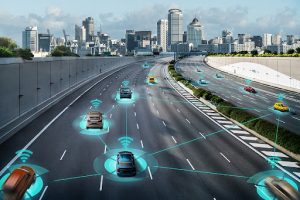 The sci-fi genre is riddled with plots where machines take over the world with disturbing results for humans. In reality, we are seeing machines become a partner rather than an adversary as smart IoT machines are being used by humans to supplement tasks.
The sci-fi genre is riddled with plots where machines take over the world with disturbing results for humans. In reality, we are seeing machines become a partner rather than an adversary as smart IoT machines are being used by humans to supplement tasks.
Keeping Infrastructure Secure
New York City's Department of Buildings has paired inspectors with drones to conduct enhanced visual reviews of building facades with greater efficiency. Drones are equipped with video cameras, lidar, thermal imaging, photogrammetry and location software to quickly gather a wide variety of information for inspectors to review. In fact, these vehicles can capture images at angles nearly impossible for inspectors to accomplish. The department found that certain physical examinations, such as sounding and probes, still needed to be conducted by qualified professionals for a full inspection but by speeding up other inspections, their personnel are freed up to conduct work that requires human intervention.
Similarly, sensors are being used to alleviate maintenance issues in roadways. Research from Michigan State University showed that sensors embedded to create "smart pavement" could pinpoint areas and time for preventive intervention. Research shows that for every $1 spent on preventive smart pavement maintenance, there is a savings of $4 to $10 on rehabilitation. Continue reading

 The results of the 13th FITARA scorecard, a program
The results of the 13th FITARA scorecard, a program  In an effort to continue to keep us safe, law enforcement and other first responders are embracing and responding to the implementation of new technologies. In this post we'll take a look at three technology areas impacting how law enforcement carries out their mission - video, autonomous vehicles, and Internet of Things.
In an effort to continue to keep us safe, law enforcement and other first responders are embracing and responding to the implementation of new technologies. In this post we'll take a look at three technology areas impacting how law enforcement carries out their mission - video, autonomous vehicles, and Internet of Things.
 While the focus of government modernization has been transitioning government into the Cloud,
While the focus of government modernization has been transitioning government into the Cloud, 
